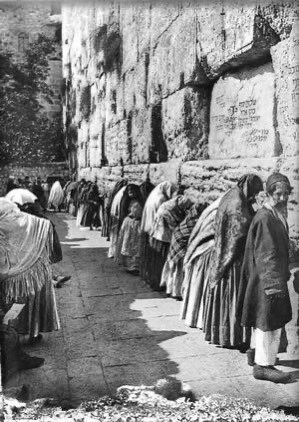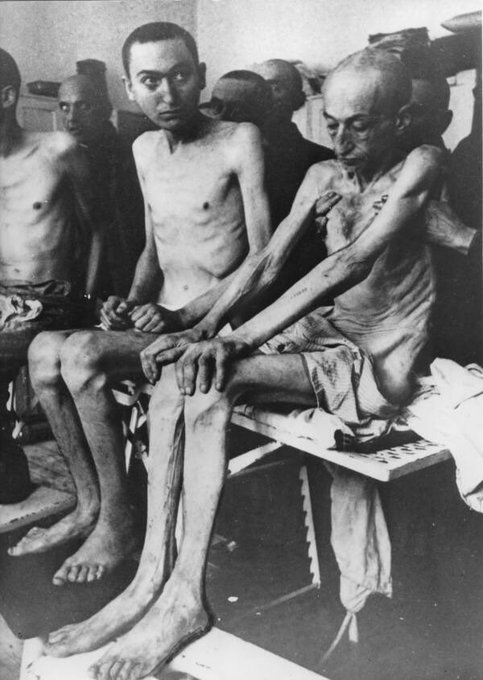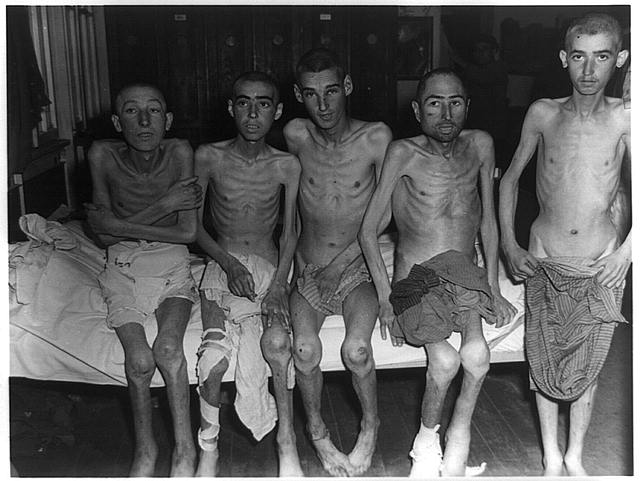🧵 𝐓𝐡𝐞 𝐁𝐢𝐠𝐠𝐞𝐬𝐭 𝐇𝐢𝐣𝐚𝐜𝐤𝐢𝐧𝐠 𝐢𝐧 𝐇𝐢𝐬𝐭𝐨𝐫𝐲: 𝐓𝐡𝐞 𝐒𝐭𝐨𝐥𝐞𝐧 𝐒𝐭𝐨𝐫𝐲 𝐨𝐟 𝐭𝐡𝐞 𝐉𝐞𝐰𝐬 𝐚𝐧𝐝 𝐉𝐞𝐫𝐮𝐬𝐚𝐥𝐞𝐦.
Thread: Before we dive in, let’s address a critical issue: There are some people around the world who perceive Jerusalem as an Arab area, including the ICJ, with some even advocating for it to be handed over to the Palestinians as the capital of their prospective terror state. This view overlooks the profound and unbroken Jewish connection to Jerusalem. Let’s review how Jerusalem is intrinsically Jewish and how its history has been hijacked and rewritten.
Thread: Before we dive in, let’s address a critical issue: There are some people around the world who perceive Jerusalem as an Arab area, including the ICJ, with some even advocating for it to be handed over to the Palestinians as the capital of their prospective terror state. This view overlooks the profound and unbroken Jewish connection to Jerusalem. Let’s review how Jerusalem is intrinsically Jewish and how its history has been hijacked and rewritten.

1/ 🌟 Jerusalem: The Eternal Capital of the Jewish People 🌟
Jerusalem has been the heart and soul of the Jewish people for over 3,500 years. Despite countless challenges and adversities, the Jewish presence in Jerusalem has remained unbroken, underscoring a deep-rooted and unwavering connection to this sacred city. From the days of Joshua and King David to the modern era, Jerusalem has been a constant in Jewish life, culture, and religion, symbolizing the enduring spirit and resilience of the Jewish people.
Jerusalem has been the heart and soul of the Jewish people for over 3,500 years. Despite countless challenges and adversities, the Jewish presence in Jerusalem has remained unbroken, underscoring a deep-rooted and unwavering connection to this sacred city. From the days of Joshua and King David to the modern era, Jerusalem has been a constant in Jewish life, culture, and religion, symbolizing the enduring spirit and resilience of the Jewish people.

2/ 🕰️ Ancient Beginnings 🕰️
The history of Jews in Jerusalem dates back to ancient times, even before King David. Joshua, the biblical leader who succeeded Moses, conquered the land of Israel, including Jerusalem, around the 13th century BCE. This marked the beginning of a significant Jewish presence in the city. Later, King David established Jerusalem as the capital of the Jewish nation around 1000 BCE. This monumental decision solidified Jerusalem’s status as not just a political center but also a spiritual and cultural heart for Jews. His son, King Solomon, built the First Temple, making Jerusalem the focal point of Jewish worship and pilgrimage. The Temple served as the epicenter of Jewish religious life, drawing Jews from all corners of the land to partake in rituals and festivals, thus embedding Jerusalem deeply in Jewish identity.
The history of Jews in Jerusalem dates back to ancient times, even before King David. Joshua, the biblical leader who succeeded Moses, conquered the land of Israel, including Jerusalem, around the 13th century BCE. This marked the beginning of a significant Jewish presence in the city. Later, King David established Jerusalem as the capital of the Jewish nation around 1000 BCE. This monumental decision solidified Jerusalem’s status as not just a political center but also a spiritual and cultural heart for Jews. His son, King Solomon, built the First Temple, making Jerusalem the focal point of Jewish worship and pilgrimage. The Temple served as the epicenter of Jewish religious life, drawing Jews from all corners of the land to partake in rituals and festivals, thus embedding Jerusalem deeply in Jewish identity.

3/ 📜 Exile and Return 📜
Even after the destruction of the First Temple by the Babylonians in 586 BCE, the Jewish connection to Jerusalem did not wane. Jews returned to rebuild and renew their bond with the city, demonstrating their resilience and unyielding faith. The completion of the Second Temple in 516 BCE was a significant event, symbolizing a new era of Jewish religious and communal life. Despite subsequent invasions and occupations, the Jewish people continuously sought to restore and maintain their presence in Jerusalem, highlighting their enduring attachment to the city.
Even after the destruction of the First Temple by the Babylonians in 586 BCE, the Jewish connection to Jerusalem did not wane. Jews returned to rebuild and renew their bond with the city, demonstrating their resilience and unyielding faith. The completion of the Second Temple in 516 BCE was a significant event, symbolizing a new era of Jewish religious and communal life. Despite subsequent invasions and occupations, the Jewish people continuously sought to restore and maintain their presence in Jerusalem, highlighting their enduring attachment to the city.

4/ 🏛️ Roman Destruction and Diaspora 🏛️
The Roman destruction of the Second Temple in 70 CE marked a profound moment of loss for the Jewish people, yet their connection to Jerusalem endured. Even as Jews were scattered across the globe in the ensuing diaspora, Jerusalem remained at the core of Jewish religious life and longing. Daily prayers, rituals, and cultural practices consistently oriented towards Jerusalem, preserving its significance in Jewish consciousness. Throughout centuries of dispersion, Jews always yearned for their return to Jerusalem, keeping the city’s memory alive in their hearts and minds.
The Roman destruction of the Second Temple in 70 CE marked a profound moment of loss for the Jewish people, yet their connection to Jerusalem endured. Even as Jews were scattered across the globe in the ensuing diaspora, Jerusalem remained at the core of Jewish religious life and longing. Daily prayers, rituals, and cultural practices consistently oriented towards Jerusalem, preserving its significance in Jewish consciousness. Throughout centuries of dispersion, Jews always yearned for their return to Jerusalem, keeping the city’s memory alive in their hearts and minds.

5/ 🌍 Medieval and Ottoman Eras🌍
Throughout the Middle Ages and the Ottoman rule, Jewish communities in Jerusalem faced periods of hardship and revival. Despite various conquerors and shifting political landscapes, Jews never abandoned their spiritual and historical ties to the city. During the Ottoman era, from 1517 to 1917, Jewish life in Jerusalem experienced significant changes. The Ottomans, recognizing the historical Jewish connection to the land, allowed Jewish refugees from Spain and other regions to settle in the city. This period saw a revival of Jewish communal life, with the establishment of new synagogues, schools, and community institutions, further cementing the continuous Jewish presence in Jerusalem.
Throughout the Middle Ages and the Ottoman rule, Jewish communities in Jerusalem faced periods of hardship and revival. Despite various conquerors and shifting political landscapes, Jews never abandoned their spiritual and historical ties to the city. During the Ottoman era, from 1517 to 1917, Jewish life in Jerusalem experienced significant changes. The Ottomans, recognizing the historical Jewish connection to the land, allowed Jewish refugees from Spain and other regions to settle in the city. This period saw a revival of Jewish communal life, with the establishment of new synagogues, schools, and community institutions, further cementing the continuous Jewish presence in Jerusalem.

6/ ✡️ The Jewish Quarter ✡️
The Jewish Quarter of the Old City of Jerusalem has been a vibrant center of Jewish life for centuries, a microcosm of the broader Jewish experience in the city. Its synagogues, schools, and homes are living monuments to the continuous Jewish presence and the community’s resilience in the face of adversity. Over the centuries, despite periods of destruction and renewal, the Jewish Quarter has remained a focal point of Jewish cultural and religious life, embodying the steadfast connection of Jews to their ancient capital.
The Jewish Quarter of the Old City of Jerusalem has been a vibrant center of Jewish life for centuries, a microcosm of the broader Jewish experience in the city. Its synagogues, schools, and homes are living monuments to the continuous Jewish presence and the community’s resilience in the face of adversity. Over the centuries, despite periods of destruction and renewal, the Jewish Quarter has remained a focal point of Jewish cultural and religious life, embodying the steadfast connection of Jews to their ancient capital.

7/ 🚫 Temple Mount Restrictions 🚫
Today, Jews face restrictions on visiting the Temple Mount, the holiest site in Judaism. Control by Muslim authorities has prevented Jews from freely accessing the area, highlighting ongoing tensions and challenges. The Temple Mount, where the First and Second Temples once stood, remains a profoundly significant site for Jews. However, the complex political and religious dynamics have resulted in limitations on Jewish worship and presence, reflecting broader issues of religious freedom and historical rights.
Today, Jews face restrictions on visiting the Temple Mount, the holiest site in Judaism. Control by Muslim authorities has prevented Jews from freely accessing the area, highlighting ongoing tensions and challenges. The Temple Mount, where the First and Second Temples once stood, remains a profoundly significant site for Jews. However, the complex political and religious dynamics have resulted in limitations on Jewish worship and presence, reflecting broader issues of religious freedom and historical rights.

8/ 🕌 Historical Hijacking 🕌
The Temple Mount, where the First and Second Temples once stood, has been at the center of a significant historical hijacking. Today, many around the world view it primarily as a Muslim site, overshadowing its profound Jewish significance. Despite its deep roots in Jewish history, the site has been rebranded, with many now referring to it exclusively by its Islamic name, Al-Haram Al-Sharif. The reality is that Jerusalem holds a marginal place in Islamic tradition compared to its central role in Judaism. The Quran does not mention Jerusalem, and its association with Islam primarily stems from later historical developments. This rebranding diminishes the Jewish connection to the Temple Mount, a place where Jews have prayed and yearned for thousands of years. The ongoing restrictions on Jewish access and worship at this sacred site underscore the broader struggle for recognition of Jerusalem’s true historical and religious narrative.
The Temple Mount, where the First and Second Temples once stood, has been at the center of a significant historical hijacking. Today, many around the world view it primarily as a Muslim site, overshadowing its profound Jewish significance. Despite its deep roots in Jewish history, the site has been rebranded, with many now referring to it exclusively by its Islamic name, Al-Haram Al-Sharif. The reality is that Jerusalem holds a marginal place in Islamic tradition compared to its central role in Judaism. The Quran does not mention Jerusalem, and its association with Islam primarily stems from later historical developments. This rebranding diminishes the Jewish connection to the Temple Mount, a place where Jews have prayed and yearned for thousands of years. The ongoing restrictions on Jewish access and worship at this sacred site underscore the broader struggle for recognition of Jerusalem’s true historical and religious narrative.

9/ 📜 Jewish Presence Through the Ages 📜
Over the last 1,800 years, Jews have consistently lived in Jerusalem and throughout Israel, even under various foreign rulers. For example, in the 9th century, Jewish scholar Saadia Gaon wrote extensively about Jewish life in Jerusalem. In the 11th century, Spanish-Jewish traveler Benjamin of Tudela documented thriving Jewish communities in the city. By the 16th century, under Ottoman rule, Jerusalem saw a revival of Jewish life with the arrival of Jewish refugees from Spain. The 19th century witnessed the establishment of new Jewish neighborhoods outside the Old City walls, symbolizing the growth and resilience of the Jewish population. These examples illustrate that, despite hardships and displacements, Jews have maintained a continuous presence in Jerusalem, contributing to its cultural and religious landscape.
Over the last 1,800 years, Jews have consistently lived in Jerusalem and throughout Israel, even under various foreign rulers. For example, in the 9th century, Jewish scholar Saadia Gaon wrote extensively about Jewish life in Jerusalem. In the 11th century, Spanish-Jewish traveler Benjamin of Tudela documented thriving Jewish communities in the city. By the 16th century, under Ottoman rule, Jerusalem saw a revival of Jewish life with the arrival of Jewish refugees from Spain. The 19th century witnessed the establishment of new Jewish neighborhoods outside the Old City walls, symbolizing the growth and resilience of the Jewish population. These examples illustrate that, despite hardships and displacements, Jews have maintained a continuous presence in Jerusalem, contributing to its cultural and religious landscape.

10/ 🕊️ Jerusalem Today 🕊️
Today, Jerusalem stands as a thriving city, embodying the spirit and resilience of the Jewish people. Despite ongoing challenges and political complexities, the eternal bond between Jews and Jerusalem remains unbreakable, reflecting millennia of history, faith, and determination. Jerusalem continues to be a center of Jewish religious, cultural, and political life, symbolizing the unyielding connection of the Jewish people to their ancient capital. The city’s vibrant life and continuous development are testaments to the enduring spirit of the Jewish community and their unwavering commitment to Jerusalem.
Today, Jerusalem stands as a thriving city, embodying the spirit and resilience of the Jewish people. Despite ongoing challenges and political complexities, the eternal bond between Jews and Jerusalem remains unbreakable, reflecting millennia of history, faith, and determination. Jerusalem continues to be a center of Jewish religious, cultural, and political life, symbolizing the unyielding connection of the Jewish people to their ancient capital. The city’s vibrant life and continuous development are testaments to the enduring spirit of the Jewish community and their unwavering commitment to Jerusalem.

📖 Conclusion 📖
Jerusalem is not just a city; it is the heart of Jewish identity and heritage. For 3,500 years, Jews have lived, prayed, and thrived in Jerusalem. Despite numerous challenges and adversities, their connection remains steadfast, a testament to the enduring spirit of the Jewish people. The history of Jerusalem is a story of resilience, faith, and an unbreakable bond that has withstood the test of time. Today, as we honor this profound connection, we also look towards a future where Jerusalem continues to be a symbol of hope, unity, and peace for all who hold it dear.
𝐘𝐨𝐮 𝐜𝐚𝐧'𝐭 𝐫𝐞𝐦𝐨𝐯𝐞 𝐉𝐞𝐫𝐮𝐬𝐚𝐥𝐞𝐦 𝐟𝐫𝐨𝐦 𝐉𝐮𝐝𝐚𝐢𝐬𝐦 𝐚𝐧𝐝 𝐲𝐨𝐮 𝐜𝐚𝐧'𝐭 𝐫𝐞𝐦𝐨𝐯𝐞 𝐉𝐮𝐝𝐚𝐢𝐬𝐦 𝐟𝐫𝐨𝐦 𝐉𝐞𝐫𝐮𝐬𝐚𝐥𝐞𝐦.
Jerusalem is not just a city; it is the heart of Jewish identity and heritage. For 3,500 years, Jews have lived, prayed, and thrived in Jerusalem. Despite numerous challenges and adversities, their connection remains steadfast, a testament to the enduring spirit of the Jewish people. The history of Jerusalem is a story of resilience, faith, and an unbreakable bond that has withstood the test of time. Today, as we honor this profound connection, we also look towards a future where Jerusalem continues to be a symbol of hope, unity, and peace for all who hold it dear.
𝐘𝐨𝐮 𝐜𝐚𝐧'𝐭 𝐫𝐞𝐦𝐨𝐯𝐞 𝐉𝐞𝐫𝐮𝐬𝐚𝐥𝐞𝐦 𝐟𝐫𝐨𝐦 𝐉𝐮𝐝𝐚𝐢𝐬𝐦 𝐚𝐧𝐝 𝐲𝐨𝐮 𝐜𝐚𝐧'𝐭 𝐫𝐞𝐦𝐨𝐯𝐞 𝐉𝐮𝐝𝐚𝐢𝐬𝐦 𝐟𝐫𝐨𝐦 𝐉𝐞𝐫𝐮𝐬𝐚𝐥𝐞𝐦.

• • •
Missing some Tweet in this thread? You can try to
force a refresh



















